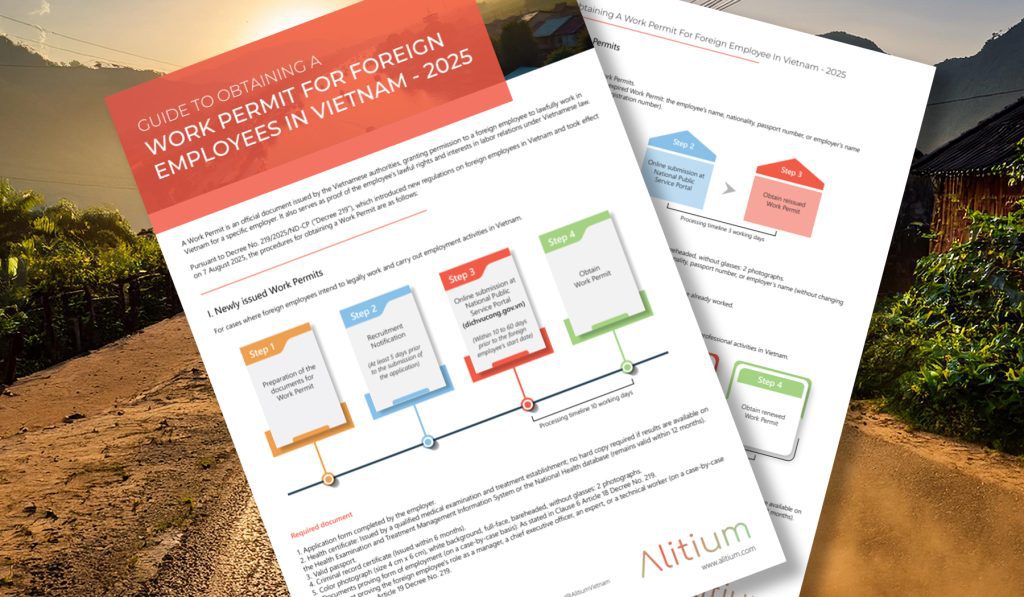Vietnam Transfer Pricing – Risks and Obligations for Foreign Investors
Introduction
Vietnam’s continued economic growth and its interdependency and integration into the global economy have supported its position as a prime destination for foreign investment. However, with these opportunities come specific transfer pricing obligations. Foreign investors need to ensure familiarity with Vietnamese investment structures, domestic accounting and tax treatments, and the interaction of these with transfer pricing compliance. This article provides an overview to navigating Vietnam’s transfer pricing landscape.
What is Transfer Pricing?
Transfer pricing refers to the pricing of goods, services, and intangible assets transferred between related entities within a multinational corporation (MNC). These prices need to reflect the arm’s length principle, meaning they should be comparable to prices charged in transactions between unrelated parties under similar circumstances. Transfer pricing is crucial as it affects the allocation of income and expenses between related entities, impacting taxable profits in different jurisdictions.
Why is Transfer Pricing Important in Vietnam?
Vietnam has introduced and begain enforcing more stringent transfer pricing regulations in recent years to prevent tax evasion through profit shifting by MNCs. The Vietnamese government seeks to ensure that MNCs pay their fair share of taxes on profits generated within the country. Failing to comply with these regulations can result in significant penalties, tax adjustments, and damage to a company’s reputation.
Regulatory Framework
Vietnam’s transfer pricing regulations are primarily governed by Decree No. 20/2017/ND-CP and its amendment, Decree No. 132/2020/ND-CP. These decrees generally align with the OECD’s Base Erosion and Profit Shifting (BEPS) Action Plan, specifically Action 13, which mandates transfer pricing documentation and reporting requirements.
Key aspects of the regulatory framework include:
- Arm’s Length Principle: Transactions between related parties must be conducted at market prices.
- Three-Tiered Documentation: MNCs must maintain and be ready to submit a Local File, a Master File, and a Country-by-Country (CbC) Report, depending on certain factors.
- Disclosure Requirements: Annual disclosure forms must be submitted with the Corporate Income Tax (CIT) return in line with annual CIT finaling deadlines.

Risks Associated with Transfer Pricing Non-Compliance
Non-compliance with transfer pricing regulations in Vietnam can lead to several risks:
- Tax Adjustments: The tax authorities may adjust taxable profits, resulting in higher tax liabilities – and in many cases these can be significant.
- Penalties and Interest: Companies may face penalties and interest on additional tax amounts due to incorrect transfer pricing practices.
- Reputational Damage: Non-compliance can harm a company’s reputation, affecting its relationships with stakeholders and the public.
- Increased Scrutiny: Persistent non-compliance can lead to increased scrutiny and audits from tax authorities.
Transfer Pricing Obligations
Arm’s Length Principle
To comply with the arm’s length principle, companies must ensure that their intercompany transactions are priced similarly to transactions between unrelated parties. This involves conducting thorough benchmarking studies to compare their pricing with that of comparable independent transactions.
Three-Tiered Documentation
Local File: This document provides detailed information about the local entity’s related party transactions, including functional and economic analyses. It must demonstrate that the prices set for these transactions comply with the arm’s length principle.
Master File: The Master File contains an overview of the MNC’s global business operations, including organizational structure, description of business activities, and the company’s transfer pricing policies.
Country-by-Country Report (CbC Report): Applicable to MNCs with consolidated group revenue exceeding a specified threshold (currently EUR 750 million). The CbC Report includes information on the global allocation of income, taxes paid, and other indicators of economic activity across tax jurisdictions.
Annual Disclosure Requirements
Companies must file an annual transfer pricing disclosure form (Form 01) along with their CIT return. This form requires detailed information about the related party transactions, including transaction values and transfer pricing methodologies used. Although the Three-Tiered Documentation is not required to be submitted until requested, it must be prepared and maintained contemporaneously with the Form 1, otherwise discrepancies will result in further tax compliance issues and likely penalties.
Practical Steps to Ensure Compliance
Conduct a Transfer Pricing Risk Assessment
Foreign investors should begin by conducting a thorough transfer pricing risk assessment to identify potential areas of non-compliance. This involves reviewing all related party transactions, existing transfer pricing policies, and the current documentation in place. For many companies, which are just commencing their transfer pricing journey in Vietnam, the risk assessment exercise will form the basis for compliance and understanding obligations.
Implement Robust Transfer Pricing Policies
Develop and implement robust transfer pricing policies that align with both local regulations and their groups global transfer pricing strategy. These policies should be regularly reviewed and updated to reflect any changes in the business or regulatory environment, particularly to understand where there are differences between local and global requirements and the solutions to manage these differences in advance.
Maintain Comprehensive Documentation
Ensure that the Local File, Master File, and CbC Report (if applicable) are prepared and maintained in accordance with Vietnamese regulations. These documents should be updated annually to reflect any changes in related party transactions or business operations, and match the summary submitted with annual CIT finalisation submission.
Undertake Appropriate Benchmarking
Conduct regular benchmarking to ensure that intercompany transactions are priced at arm’s length. This involves comparing the pricing of related party transactions with that of similar transactions between independent parties. It is important that databases / data usedfor benchmarking aligns with the practical approach used by Vietnamese tax authorities, so that a “deemed” position is not determined later by the local authorities where they don’t agree with the company’s approach.
Training and Awareness
Provide regular training to relevant staff (both within and outside Vietnam) on transfer pricing regulations in Vietnam and the importance of compliance. This helps ensure that all employees involved in transfer pricing understand their roles and responsibilities.
Engage Professional Advisors
Given the complexity of transfer pricing regulations in Vietnam, engaging professional advisors with expertise in transfer pricing can provide invaluable assistance. They can help with risk assessments, documentation preparation, benchmarking and negotiations with tax authorities.
Conclusion
Navigating Vietnam’s transfer pricing regulations can be challenging, especially for foreign investors unfamiliar with the local regulatory landscape. However, by understanding the risks and obligations associated with transfer pricing, companies can take proactive steps to ensure compliance and avoid potential penalties. Key actions include conducting risk assessments, implementing robust transfer pricing policies, maintaining comprehensive documentation, and engaging professional advisors. By doing so, foreign investors can effectively manage their transfer pricing risks and focus on maximizing their business opportunities in Vietnam.
References
- Decree No. 20/2017/ND-CP: Providing regulations on tax administration applicable to enterprises having related party transactions.
- Decree No. 132/2020/ND-CP: Amending and supplementing a number of articles of Decree No. 20/2017/ND-CP.
- OECD BEPS Action Plan: A set of 15 specific actions designed to provide governments with the domestic and international instruments needed to tackle BEPS.
Understanding and adhering to Vietnam’s transfer pricing regulations is not just about compliance; it’s about safeguarding your investment and ensuring sustainable business operations in a growing economy. By taking a structured and informed approach, foreign investors can navigate the complexities of transfer pricing and achieve their business objectives in Vietnam.
Phuong Vo is Founder & Managing Partner at Alitium Vietnam, providing market entry and professional support for foreign investors in Vietnam. Contact Phuong via Alitium.com for further assistance and advice.








